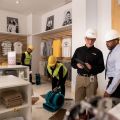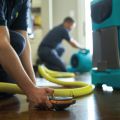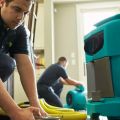What is Gray Water?

Professional water damage restoration service providers, such as the team at ServiceMaster by LoveJoy, are familiar with the risks associated with water damage. One of the most critical steps in the water damage restoration process is determining the kind of contamination being dealt with. The Institute of Inspection Cleaning and Restoration Certification (IICRC) classifies three different types of contaminated water based on the source of the damage, the length of exposure to the structure, and the likelihood of harmful contaminants that may be present. Learn about Category 2 water or gray water in this article.
What is Category 2 Water?
In time, Category 2 water damage could escalate into Category 3 water due to bacterial growth, which could lead to serious illnesses or possible death. Within 24 to 48 hours, mold can start growing and cause the damage to get worse. Untreated mold growth can lead to allergies, asthma, and other respiratory problems.
How to Remove Category 2 Water
- Water removal and structural drying - drying of all household contents, including carpet, drywall, flooring, materials, rugs, and upholstery.
- Removal of porous materials - porous materials like wood and carpets must be discarded to reduce the possibility of mold growth.
- Hard surface cleaning - hard surfaces will be treated with disinfectants and cleaning agents to remove mold and water damage from items that can be salvaged.
- HVAC equipment cleanup and disinfection - mold can grow inside HVAC equipment, so a proper cleanup and disinfection must be performed to prevent mold spores from being recirculated indoors and keep building occupants safe.
Water Damage Restoration Company in Conyers, GA
Category 2 water can cause minor to severe damages to property, and a do-it-yourself cleanup is unsafe and not enough. ServiceMaster by LoveJoy is an experienced water damage restoration company in Conyers, GA certified by the IICRC. We have a team of qualified property damage restoration specialists who can respond to your water, fire, or mold damage issue 24 hours a day, 7 days a week, 365 days a year. ServiceMaster by LoveJoy utilizes the industry's top technologies to perform an extensive and effective clean to both residential and commercial properties. We are equipped with the latest practices and methods in property damage restoration and are a Preferred Vendor for top insurance carriers in the area.
Discover how ServiceMaster by LoveJoy can help you today. Contact us at (678) 293-0297 for Conyers customers and (770) 983-6665 for Roswell customers. Our team is servicing clients in Atlanta, Roswell , Sandy Springs, Marietta, Decatur, Stockbridge, Conyers, McDonough, Stone Mountain, Covington, Social Circle, Dekalb County, Fulton County, Georgia and surrounding areas.






